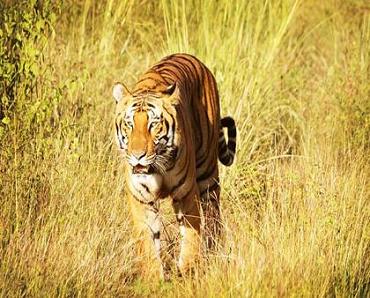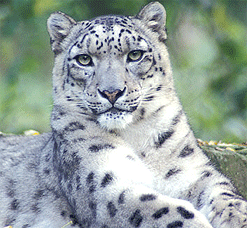
Welcome |
|
|
|
|
|
|
|
|
|
|
|
|
|
|
|
|
|
|
|
|
|
|
|
|
|
|
|
|
|
|
|
|
|
|
|
|
|
|
|
|
|
|
|
|
|
|
|
|
|
|
|
|
|
|
|
|
|
|
|
|
|
|
|
|
Wildlife Sanctuaries in Uttaranchal
|
|
Uttaranchal is very rich in terms of wildlife and forest area. The thick forests and mountains houses a variety of species of wildlife, birds and plants. Corbett National Park, Rajaji National park, Nanda Devi National park, Valley of Flowers National Park, Kedarnath Wildlife sanctuary and Govind Wildlife sanctuary are the famous wildlife sanctuaries and national parks in Uttaranchal.
|
|
|
|
|
Corbett National Park |
|
Corbett National Park is the most famous national park in Uttaranchal. Corbett National Park is located in the foothills of the Himalayas, about 144 kms. from Nainital. This park was established in 1936, as the Hailey National Park. Corbett National Park was the India's first national park and also the first sanctuary to come under ‘project Tiger’ in April 1973. This park was earlier a popular hunting ground of the British. This park was named in honor of the late Jim Corbett. This park is spread over an area of 1318.54 square kms and includes apart from Corbett National Park, additional areas of Sonanadi wildlife sanctuary and Reserve Forest buffer zone. The topography in this park comprises of hilly and riverine areas, temporary marshy depressions, plateaus and ravines. The major wildlife animals found in this park are Tiger, Leopard, Elephant, Deer, Wild Boar, |
 |
|
Leopard Cat, Jungle Cat, Sloth Bear, Himalayan Black Bear, Wild Dog, Langur, Rhesus Monkey, Himalayan Palm Civet, Indian Grey Mongoose, Common Otter, Blacknaped Hare, Porcupine and Jackal. Along the banks of the Ramganga River, one can also spot the Crocodiles. Besides various wildlife animals about 580 species of resident and migratory birds are also found here. This park can be visited either by having an Elephant or a Jeep Safari. There are watchtowers inside the park from where one can also view the animals at a very close distance. The best season to visit the Corbett National Park is from November to June. |
|
|
|
|
|
Govind Wildlife Sanctuary |
 |
The Govind Wildlife Sanctuary is situated in the Uttarkashi district of Uttararanchal. This wildlife sanctuary was established on 1st March, 1955 and spreads over an area of 957.969 square kms. This sanctuary forms the upper catchment of the Tons river, which is the most important tributary of River Yamuna in its upper reaches. The area is very rich in medicinal plants and its large area along with the forests of the neighbouring forest divisions helps in maintaining genetic diversity. The area is a home of over 15 species of mammals and 150 species of birds. The main attraction of this wildlife sanctuary is the Snow leopard. Black bear, Brown bear, Musk deer, Bharal, Himalayan Tahr and Common leopard are the other animals which can be seen in this sanctuary. The birds which can be seen in this sanctuary are Monal pheasant, Koklas pheasant, Western
Tragopan, |
|
Himalayan
Snow cock, Golden eagle, Steppe eagle, Black eagle and Bearded vulture, pigeons, parakeets, cuckoos, owls, minivets, bulbuls, tits, warblers, thrushes, finches, buntings, etc. The best time to visit this wildlife sanctuary is from April to June and September to November. The nearest airport is the Jolly Grant in Dehradun, about 231 kms from the sanctuary. |
|
|
|
|
|
Valley of Flowers National Park |
|
The world famous Valley of Flowers is situated in the upper expansions of Bhyundar Ganga in the far interior of Garhwal Himalayas in Uttaranchal. The valley of flowers is spread over an area of 87.5 square kms. The rich references of this colouful and eye catching valley can be seen in the Indian History and literature such as the Ramayana and Mahabharat. To conserve the nature’s benevolent gift and to maintain the natural balance of the valley, the valley was declared as a National Park in 1982. The Valley was introduced to the world as the Valley of Flowers by Frank S. Smith, the mountaineer, explorer, botanist who camped here for several weeks in 1937 and
did valuable exploratory work.In 1939, Miss Margarate
Legge,a botanist arrived |

|
|
at the valley for further studies. While she was traversing some rocky slopes to collect flowers, she slipped off and was lost for ever in the garden of the gods. Her sister later visited the valley and erected a memorial on the spot where she was buried by the locals. According to local people, this valley is the playground of fairies and nymphs, and the Hanuman also collected herbs from this region to revive Laxman. The valley of Flowers National Park starts from Ghangharia but the main valley starts after crossing the gorge and the stream from Nar Parvat, 3 kms. from Ghangharia. In front of the Valley stands the snowclad peak of Ratban Parvat and at the back is the Kunt Khal, the Nar Parvat, which separates the Badrinath valley from this valley is in the left, and the dense Birch forests is on the right side. The river Pushpavati, which emerges from glacial deposits, cuts through the alpine valley. There are also various waterfalls that enhances the beauty of the valley. The region remains snow covered from November to May and the blooming of flowers starts immediately after the melting of snow but the peak blooming period is from mid July to mid of August. Almost 300 species of wild flowers bloom here in natural way. Various species of flowers like Anemone, Anaphalles, Geranium, Marsh marigold, Primulas, Potentilla, Lilium, Brahma Kamal, Campanula, Pedicularis, Impatiens, Ligularia, Anaphalis, Saxifrages, Strawberry, Rhododendrons, herbs and medicinal plants are also found here. The abundance of Asmanda fern in this valley is a rare sight than in other Himalayan valleys. Besides flowers, some species of Butterfly, Musk deer, Blue sheep (Bharal), Himalayan bear, Snow leopard, Himalayan mouse hare and some Himalayan birds are also found in this area. The splendour and the scintillating beauty of the valley attracts tourists from all over the world. The best time to visit the valley of flowers is from mid of July to mid of August. |
|
|
|
|
|
Chandraprabha Wildlife Sanctuary |
|
The Rajaji National Park is situated on the edge of the Shivalik hills in Dehradun, Haridwar and Pauri Garhwal districts in Uttaranchal. The Rajaji National park is named after late Shri C. Rajgopalachari, popularly known as Rajaji. In 1983, three wildlife sanctuaries, namely Motichur, Chilla and Rajaji, were combined into a single park of deciduous forest, riverine vegetation, grassland and pine forest under Rajaji National Park. The Rajaji National Park covers an area of about 820 square kms. It is known for its pristine scenic beauty and rich bio-diversity. It represents the flora of several zones of the forest, raverine, broad leaf mixed forest, chrpined forest, scrub land and grassy pasture lands. This sanctury offers exciting opportunities of viewing the wild animals in their natural habitat. About 23 species of mammals are found in this national park. The wildlife includes elephant, tiger, leopard, panther, bear, deer, ghoral, barking deer, spotted deer, hog deer, sambar, wild boar, nilgai, python, rhesus monkey, common langur, Leopard cat, Jungle cat, Civet cat, Yellow Throated Martin, hyena, jackal, bengal fox and monitor lizard. About 315 species of birds are found in the park. Some of these birds are peacocks, ducks, teals, cormorants, egrets, lapwing, pond herons, pea fowl, jungle fowl, kaleej pheasant, hornbill, woodpecker, kingfisher, parakeet, warbler, drongo, crows, owlets and nightjars and several species of migratory birds in winter season. 28 species of snakes, 12 species of turtles and tortoises and 9 species of lizards are also being recorded from the park. The best season to visit the park is from November to June. The nearest airport is located in Jolly Grant, Dehradun, about 24 kms from the sanctuary.
|
|
|
|
|
Nanda Devi National Park |
|
The Nanda Devi National Park is situated in the Chamoli district of Uttaranchal. This park is spread over an area of 630 square kms. and lies in the vicinity of Nanda Devi Peak, the India's second highest mountain peak. This park is regarded as a UNESCO world Heritage site. The park was established in 1980 and includes some of the hightest mountain peaks of the western Himalayas like the Trishul, Dunagiri and Bethartoli peaks. The naturalist WW Garden also made an expedition here in 1883. This park has a unique combination of flora and fauna with 312 species of plants and over 80 species of animals. Some of the animals and birds include snow leopard, brown and Himalayan black bear, bharal, Himalayan tahr, monal and chir pheasants. To visit the park, you need to trek for 50 km, after taking a jeep from Joshimath to the mountain village of Lata. |
|
|
|
|
Kedarnath Wildlife Sanctuary |
|
Kedarnath Wildlife Sanctuary was established in 1972 and spread over an area of 967 square km. in the Garhwal Himalayas. This wildlife sanctuary takes its name from the Kedarnath shrine, a hotspot for Hindu pilgrims. The fascinating Garhwal Himalayas present a spectacular viewing of mountains, valleys, forests, grasslands, butterflies and flowers. Snow leopard, leopard, tahr, goral, snow leopard, black bear, brown bear, snow cock and musk deer are the various animals which have made their habitat in this wildlife sanctuary. Kaleej and monal pheasants are the birds which can be seen here.
|
|
|